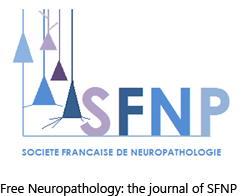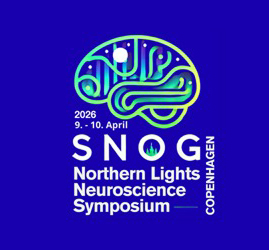Pigmented ependymoma, a tumor with predilection for the middle-aged adult: case report with methylation classification and review of 16 literature cases
DOI:
https://doi.org/10.17879/freeneuropathology-2022-4076Keywords:
Pigmented, Ependymoma, Lipofuscin, Fourth ventricle, Case report, Posterior fossa, MethylationAbstract
Ependymomas have rarely been described to contain pigment other than melanin, neuromelanin, lipofuscin or a combination. In this case report, we present a pigmented ependymoma in the fourth ventricle of an adult patient and review 16 additional cases of pigmented ependymoma from the literature. A 46-year-old female showed up with hearing loss, headaches, and nausea. Magnetic resonance imaging revealed a 2.5 cm contrast-enhancing cystic mass in the fourth ventricle, which was resected. Intraoperatively, the tumor appeared grey-brown, cystic, and was adherent to the brainstem. Routine histology revealed a tumor with true rosettes, perivascular pseudorosettes and ependymal canals consistent with ependymoma, but also showed chronic inflammation and abundant distended pigmented tumor cells that mimicked macrophages in frozen and permanent sections. The pigmented cells were positive for GFAP and negative for CD163 consonant with glial tumor cells. The pigment was negative for Fontana-Masson, positive for Periodic-acid Schiff and autofluorescent, which coincide with characteristics of lipofuscin. Proliferation indices were low and H3K27me3 showed partial loss. H3K27me 3 is an epigenetic modification to the DNA packaging protein Histone H3 that indicates the tri-methylation of lysine 27 on histone H3 protein. This methylation classification was compatible with a posterior fossa group B ependymoma (EPN_PFB). The patient was clinically well without recurrence at three-month post-operative follow-up appointment. Our analysis of all 17 cases, including the one presented, shows that pigmented ependymomas are most common in the middle-aged with a median age of 42 years and most have a favorable outcome. However, one patient that also developed secondary leptomeningeal melanin accumulations died. Most (58.8%) arise in the 4th ventricle, while spinal cord (17.6%) and supratentorial locations (17.6%) were less common. The age of presentation and generally good prognosis raise the question of whether most other posterior fossa pigmented ependymomas may also fall into the EPN_PFB group, but additional study is required to address that question.
Metrics
Published
How to Cite
Issue
Section
License
Copyright (c) 2022 Alexander Himstead, Mari Perez-Rosendahl, Gianna Fote, Angie Zhang, Michael Kim, David Floriolli, Martha Quezado, Kenneth Aldape, Drew Pratt, Zied Abdullaev, Edwin Monuki, Frank Hsu, William Yong

This work is licensed under a Creative Commons Attribution 4.0 International License.
Papers are published open access under the Creative Commons BY 4.0 license. This license lets others distribute, remix, adapt, and build upon your work, even commercially, as long as they credit you for the original creation. Data included in the article are made available under the CC0 1.0 Public Domain Dedication waiver, unless otherwise stated, meaning that all copyrights are waived.



















